You’ve finally put the finishing touches on your toolshed. Now, you just need to select the big-ticket item: your circular saw.
Choosing a circular saw is not easy for anyone. There are a seemingly endless number of options, all of which are great tools in the right hands.
Let’s start with a breakdown of two of the best:
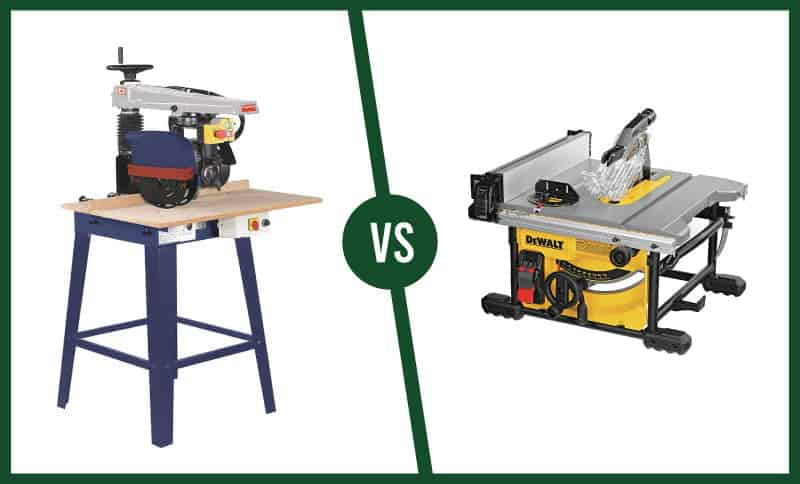
Photo credit: thetoolspick.com
TL;DR: Radial Arm Saw and Table Saw Comparison
Radial Arm Saw | Table Saw |
|---|---|
Pros | Pros |
Cons | Cons |
Best for | Best for |
More experienced craftsmen who need control over the details of their cuts. | The average user uses their circular saw for a variety of tasks. |
What is a Radial Arm Saw?
A radial arm saw is a circular saw fitted to an arm that slides horizontally, allowing the saw to cut long pieces of wood. Though many people believe that the miter saw has replaced the radial saw, standard miter saws do not move horizontally and only make short cuts. Only miter saws with compound features that include horizontal movement are equivalent to a radial saw.
Raymond DeWalt, the founder of the DeWalt brand, invented the radial arm saw in the 1920s. The DeWalt company still produces radial arm saws to this day. This type of saw was invented to make cross-cutting much easier. At this time, people still relied upon handheld saws for most of their cuts.
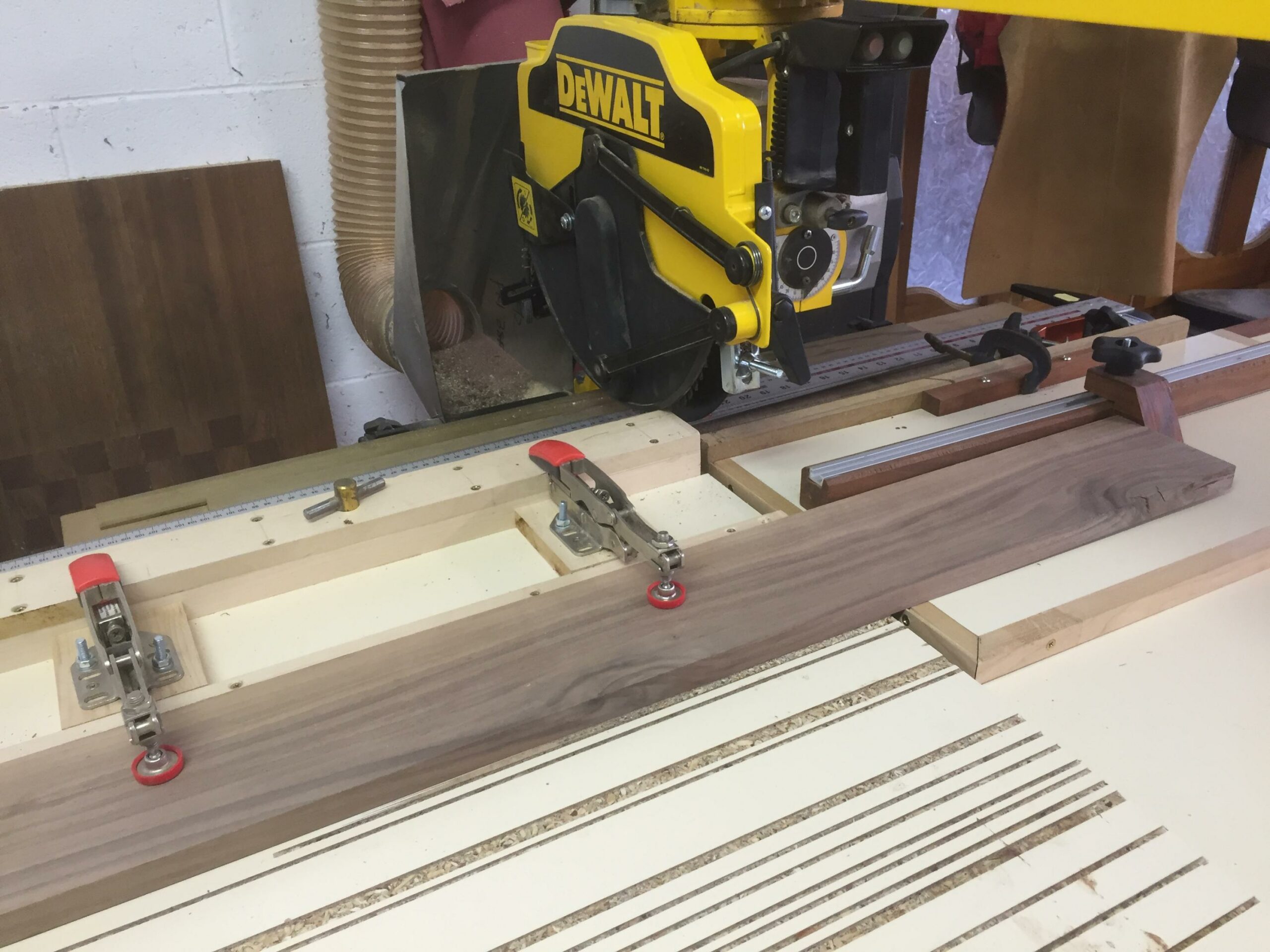
Photo credit: homemadetools.net
The radial arm saw is contemporarily used primarily for cross-cutting, ripping, or making specialty cuts. It also does many specialty cuts when you use blade attachments. Some of these cuts include dovetails, rabbits, or dados. Because the saw blade is positioned above the material, it is much easier to see these cuts as you are doing them than on a table saw.
What is a Table Saw?
Table saws are power tools that hold a circular saw blade stationary. This blade spins in place. The material is then pushed through the blade to perform a cut so that all cuts follow a horizontal line.
Most table saws are used for woodworking purposes, including carpentry, home improvement, and hobby tasks. They are often used in industrial settings and on construction sites. Also, they are regularly used in home garages or workshops. These saws cut wood, metal, acrylic, plastic, and other materials with the correct blade attachments.
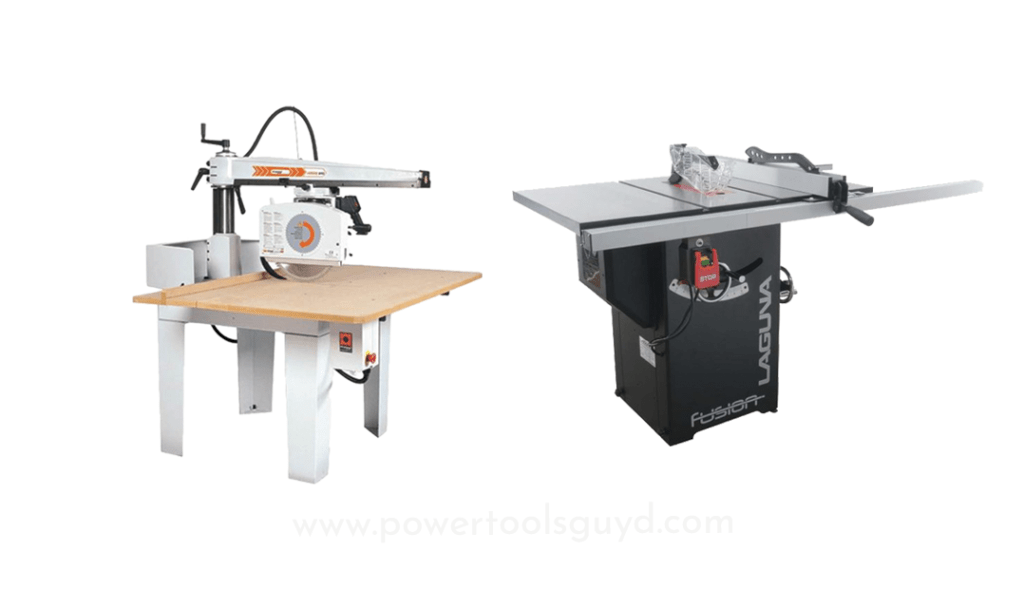
Photo credit: powertoolsguyd.com
Many different kinds of table saws are available, including benchtop, contractor, cabinet, job site, and hybrid table saws. All of these saws use circular blades, tables, fences, electrical motors, and arbors. Many of them also include accessories to perform specific tasks or improve the overall quality of the cut. These components might include feather boards and miter gauges.
The best table saws will feature a good-sized surface, an adjustable fence, a miter gauge, and a blade guard. They should also have a strong motor, a good rip capacity, high RPM potentiality, and a good degree of torque.
Relevant Characteristics Between a Radial Arm Saw and Table Saw
Radial Arm Saw | Table Saw | ||
|---|---|---|---|
~3-4” depth on 10-12” blade | Cut Depth | ~3-4” depth on 10-12” Blade | |
Varies widely | Cut Length | Max ~4’x8’ | |
Typically 15 | Amperage | Typically 15 | |
Variable (w/ units) | Wattage | 600-2,400W | |
Typically 4,000-5,000 | RPM | 3,450+ (High max range) | |
Similarities and Differences
In some regards, table saws and a. radial arm saws are similar. In other ways, they differ hugely. To make things easy, we broke down some of the similarities and differences that we highlighted above. Here’s a look at the relationship between these two saws:
Radial Arm Saw and Table Saw Differences
There are many very evident differences between the radial arm saw and the table saw. For instance, the radial arm saw features a blade attached to a radial arm that moves horizontally. The saw blade passes through the piece of material in question by sliding along this arm. In contrast, a table saw features a single stationary spinning blade inserted into a table. To use, you push a piece of material into the saw blade to cut it.
Many people use radial arm saws as a replacement for table saws because radial arm saws are more compact and only require a degree of clearance on two sides. A radial arm saw can be pushed against a wall or can fit into a fairly tight room. A table saw requires clearance on all four sides, but it can also handle larger pieces of wood and offers the operator more flexibility in terms of their position.
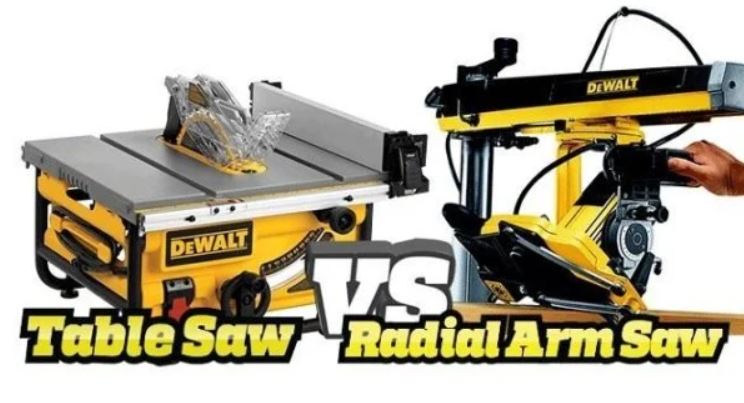
Photo credit: woodworkingtoolkit.com
Another significant difference between a radial arm saw and a table saw is the position of the blade. On a table saw, the blade sits beneath the table. It extends upwards and adjusts in terms of height. The distance raised over the table determines the depth of the cut. On a radial arm saw, the blade is above the material. The user lowers it to the correct height and pulls the material across it. The level to which it descends determines the depth of the cut.
The different blade placements allow for different kinds of visibility. With a radial arm saw, the cut is more visible when the blade does not pass through the total depth of the board. This visibility allows you to make much more precise specialty cuts.
Radial Arm Saw and Table Saw Similarities
Despite the clear differences between t two saws, there are also many similarities between radial arm saws and table saws. For one thing, these saws are both different varieties of circular saws. These saws both feature circular saw blades and electric motors. They were both also designed to make cross-cutting and ripping much more efficient than hand saws allowed for.
In addition to their basic structure, table saws and radial arm saws tend to have similar mechanisms, blade sizes, power levels, and RPM potential. The general process by which both saws operate is closely related, which also means that they get similar rip capacities, cut depths, and torque. They differ in terms of how these factors can be applied and the cuts they allow for.
A table saw and a radial arm saw can both perform a number of the same cuts. Both saws can, for instance, make rip cuts, cross cuts, and miter cuts. For most specialty cuts, the radial arm saw needs to be adapted. To effectively miter or make cross cuts, a table saw will likely need to be adapted, too. At the base level, this puts the two saws in a similar category in terms of capability.

Both radial arm saws and table saws are great multipurpose power saws for the average craftsman. Typically, a radial arm saw will take a little more care and skill to master. That said, in the right hands, either of these tools helps you make short work of difficult projects. Before the invention of these machines, ripping and crosscutting wood was a time consuming and incredibly physically demanding practice. Now, almost anyone can take wood preparation into their own hands.
Advantages of a Radial Arm Saw
There are many advantages to using a radial arm saw. First and foremost, these power saws are great for cross-cutting. As we previously mentioned, Raymond DeWitt designed the radial arm saw to make cross cutting much simpler and more efficient than was previously possible. A table saw can cross-cut with the addition of a sled. It does not do so as effectively as a radial arm saw.
Also, radial arm saws allow the operator to make a wide range of specialty cuts. With the addition of accessories, radial saws can cut rabbets, dados, and dovetails. These cuts are difficult to do by hand and are next to impossible on a standard table saw. However, in the hands of an expert, a table saw can make a wide range of cuts as well.
One of the biggest advantages of this kind of saw is its ability to cut through difficult types of wood. On a table saw, you press the wood through the saw blade, which puts much of the strain on your own body. On a radial saw, you can lock the wood in place and pull the saw blade across the wood, which means that the demanding work is on the machinery rather than the operator.
Another advantage of this kind of saw is its compact nature. When compared to most table saws, except for certain benchtop saws, the radial saw is very portable. It is also easy to use in smaller, more confined spaces because the clearance is only required along the line that the saw cuts, rather than all four sides. For this reason, radial saws are popular hobbies and workshop saws.
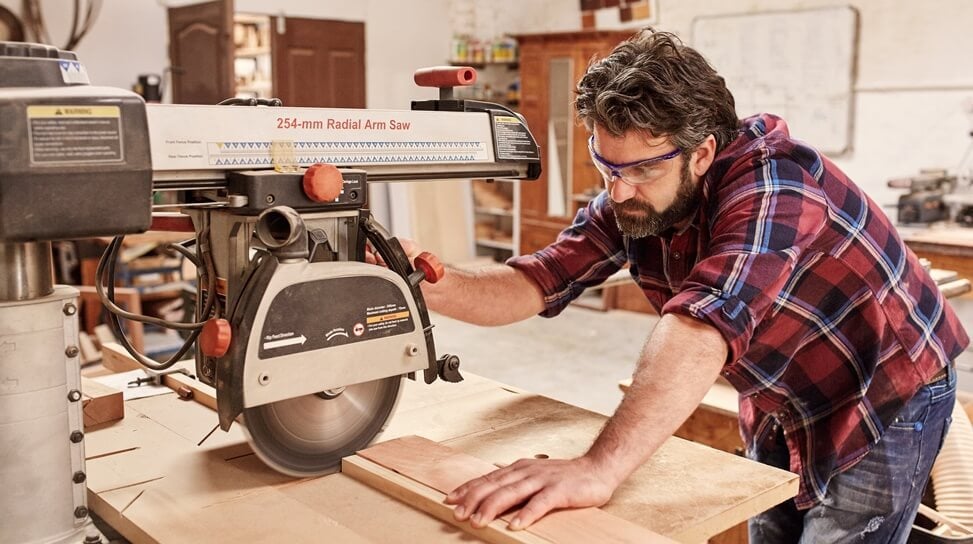
Photo credit: finepowertools.com
Advantages of a Table Saw
Table saws are very versatile pieces of equipment. People often use table saws for ripping planks, cutting sheets, or making any long, straight cuts. These saws cut pieces of wood; however, they can also cut plastic, acrylic, tile, or metal if the correct blade is attached.
Depending on how you are likely to use your table saw, you will need different things from it. For instance, if you plan to make miter cuts, cross cuts, or bevels, you will need saws that can account for these things, like a miter gauge, a sled, and an adjustable blade position, respectively.
Table saws are very powerful and can handle large pieces of wood. As long as the table itself is long enough to handle the lumber, you can push very long pieces through a table saw with minimal effort. As they run along the fence, a consistent hand can ensure regular and smooth cuts throughout.
Table saws are very simple to use. Unlike a radial arm saw, which features a moving saw blade and arm, a table saw simply requires the user to push the material through a stationary blade. All calibration and measurements are done by adjusting the table’s fence and miter gauge, which means that as long as you follow safety precautions, the cuts should not be particularly strenuous.
A table saw can make the same cut an infinite number of times. If you set your table up, you can run various pieces of wood through the machine one after the other and end up with a good pile of work material.
If you have an outfeed table, it is easy to simply run an entire deck’s worth of planks through the machine to trim them up.
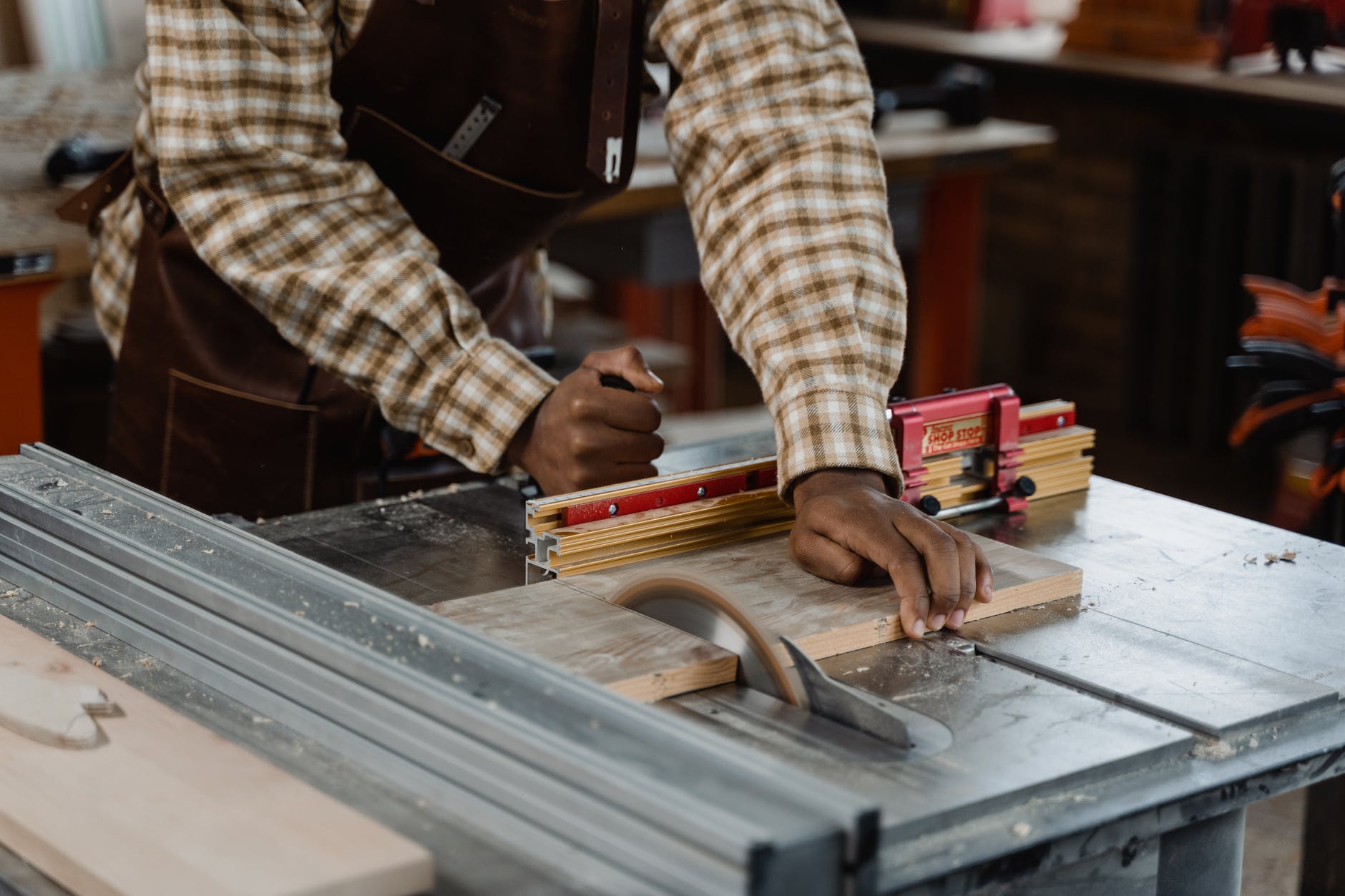
What About Miter Saws?
A popular alternative to both the radial arm saw and the table saw is the miter saw. The miter saw is another variety of circular saw. It's powered by an electric motor, like the table and radial arm saw. Between the two, the miter saw is most closely related to the radial arm saw. Many people believe that the invention of the miter saw made the radial arm saw obsolete.
The miter saw is indeed an incredibly effective tool. For short cuts, angles, crosscuts, or bevels, it's hard to find fault with the machine. The saw also allows the operator to make careful cuts. You can make miter saw cuts very clearly and sharply. On a miter saw, the handle usually allows you to adjust the blade during the cutting process. The actual shape of the cut can be controlled incredibly precisely by the operator.
However, miter saws are not perfect. Standard miter saws do not have the same horizontal cutting capability as the radial arm saw. Nor do they have the ability to cut lines nearly as long as a table saw. To do these things, a miter saw must be very sophisticated. Even then, it is unlikely that it will perform these functions to the same caliber.
As a radial arm saw, a miter saw holds the blade above the piece of material, giving you approximately the same level of visibility. A miter saw is probably more easily controlled by a beginner or amateur craftsman than a radial arm saw due to the handle and mechanism built into the miter. With a miter saw, the operator has a lot of control over the direction and depth of the cut.
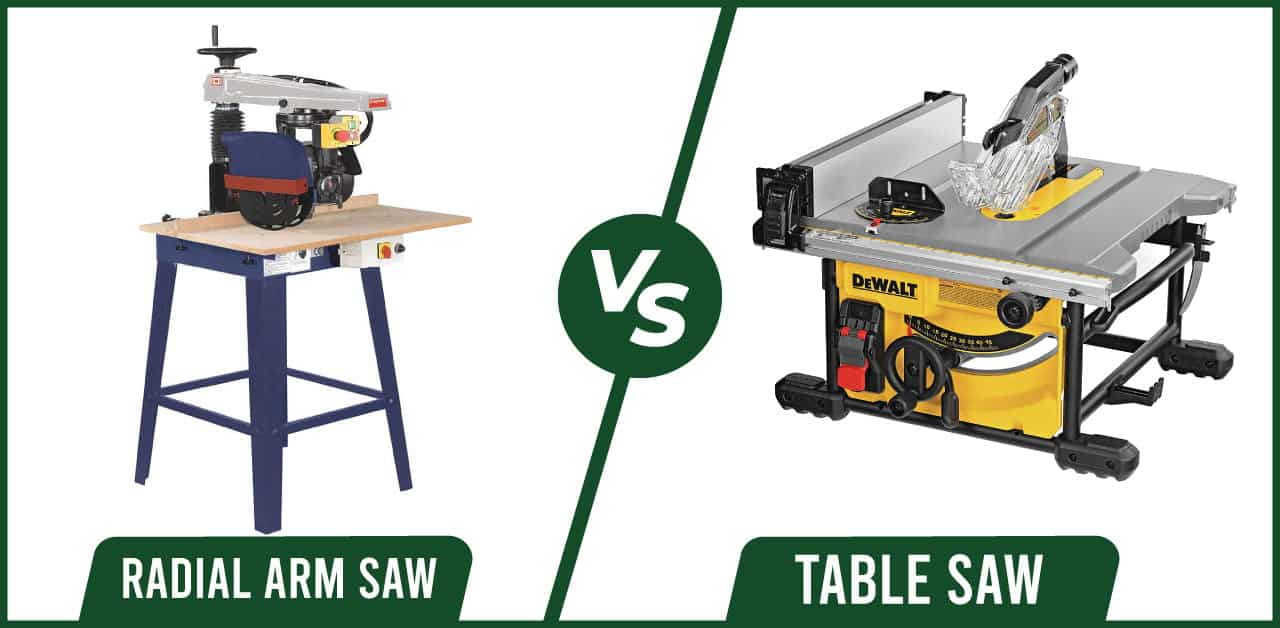
Photo credit: thetoolspick.com
When Would I Use a Radial Arm Saw and What is a Radial Arm Saw Used for?
People use radial arm saws in construction work, industrial settings, and home workshops for a wide range of tasks. Because of the range of accessories and settings, there are many potential uses for a radial arm saw.
Here’s a look at some of the things that a radial arm saw does best:
Crosscuts
Radial arm saws were originally designed to make crosscutting fast and easy, and it is still their best and most popular use.
Specialty Cuts
A radial arm saw is excellent for making specialty cuts in a piece of wood. These cuts include dovetails, dados, or rabbet cuts. You can fit the radial saw with blades specifically designed for these tasks. Radial arm saws can even be used for planning.
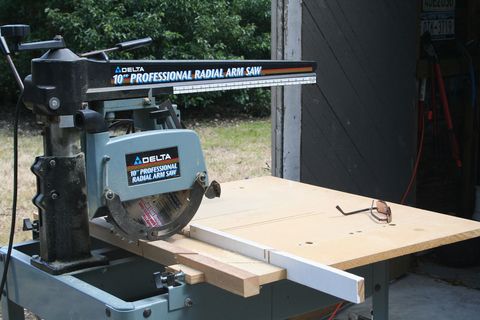
Photo credit: popularmechanics.com
Tough Wood
On a table saw, the operator must push the material being cut through the blade by hand, which means that ripping through a tough piece of wood relies on the operator's strength, leading to potential safety risks when a large amount of bodyweight is coming at the blade. In contrast, a radial arm saw is pulled through the wood on a track.
When Would I Use a Table Saw and What is a Table Saw Used for?
Carpenters, contractors, woodworkers, and a huge range of other craftsmen use table saws because the number of tasks that a table saw can handle is immense. It is unlikely that we could put together an exhaustive list even if we tried. The table saw is a versatile and highly capable piece of machinery.
A table saw is a great tool if you need to rip lumber, trim boards, separate a piece of plywood, or perform just about any long-distance, straight cut. It can also handle angles with a miter gauge.
Here are some of the things that table saws do best:
Large Cuts
For long, straight cuts, a table saw is still the best tool available. The fence can be locked into place, ensuring that the cut is consistent along with the entire distance.
Repetitive Cuts
On a table saw, it is easy to make multiple cuts of the same measurements. This is because the calibration of the table can be set and then locked into place.
Versatility
Table saws can handle almost any kind of cut you can imagine. You can cut angles, miters, and trims. The trick is knowing how to work the saw.
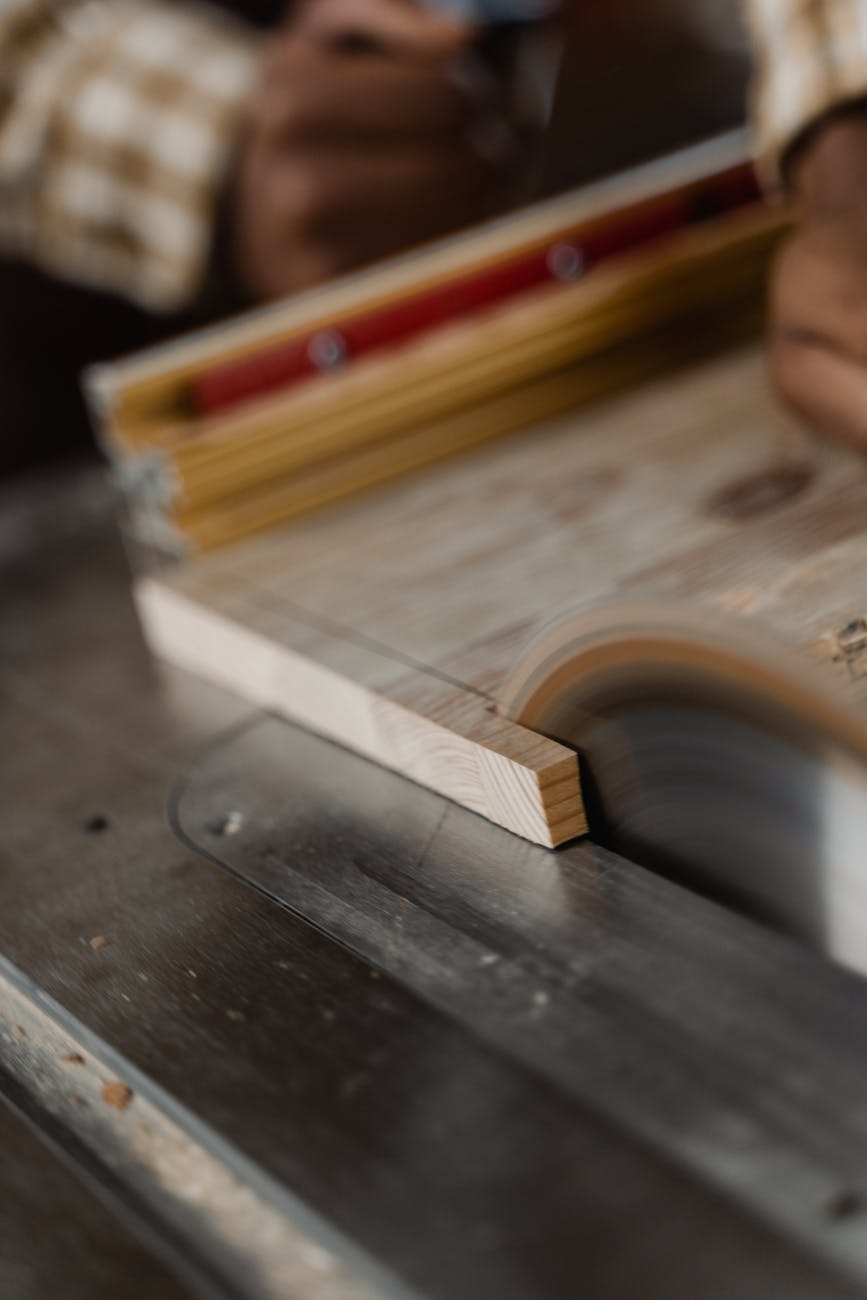
Bottom Line
Table saws and radial arm saws are both excellent circular saws for a range of woodworking needs. Neither option is superior to the other.
If you plan to do a lot of specialty cuts, are mainly performing crosscuts, or want your blade to hang above the material you are cutting, a radial arm saw is the best way to go.
If you plan to use your circular saw to cut a large number of boards, are planning to make long, straight cuts, or need consistency, a table saw is an excellent option.
People Also Ask
Here we are, the end of the line. Well, almost. Before you go, we have a handy FAQ guide to address any final questions you might have. Take a moment to look it over before heading out, buying a saw, and building something with it.
Can a Radial Arm Saw Replace a Table Saw?
Radial arm saws are a different tool. They cannot entirely replace a table saw. A radial arm saw is not the best tool for cutting lengthwise with the grain. Likewise, a table saw does not make a radial arm saw obsolete. Instead, these saws have their strengths and weaknesses.
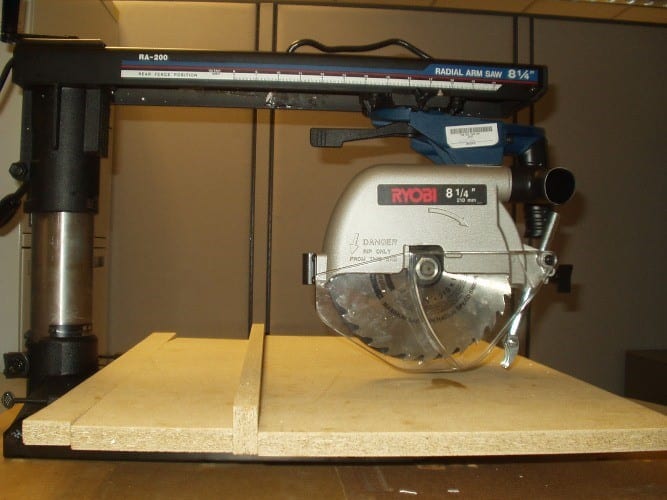
Photo credit: cutthewood.com
Are Radial Arm Saws Obsolete?
No. However, some woodworkers have decided to move away from using radial arm saws due to the increased popularity of miter saws and their compound adaptations. However, radial arm saws offer a huge amount of versatility and are the tool of choice for many.
How Much is a Radial Arm Saw?
Radial arm saws vary considerably in price. Typically, a quality radial arm saw will run in the $250-$700 range. It is possible to get good radial arm saws for less; however, their performance will suffer if you opt for the cheapest options. It is also possible to spend thousands on these saws.
How Much is a Table Saw?
There is no single price for a table saw. Some lower-tier table cost about $100. It is also possible to buy table saws for much higher - we have seen saws anywhere from $2,500 to $5,000. On average, a table saw will cost $250-$1,500.
Are Radial Arm Saws Dangerous?
Any power tool can be dangerous if operated improperly or without the correct safety precautions in place, which means that you must always wear protective equipment and cut with care. That said, a radial arm saw is not any more dangerous than another power saw if operated safely.
